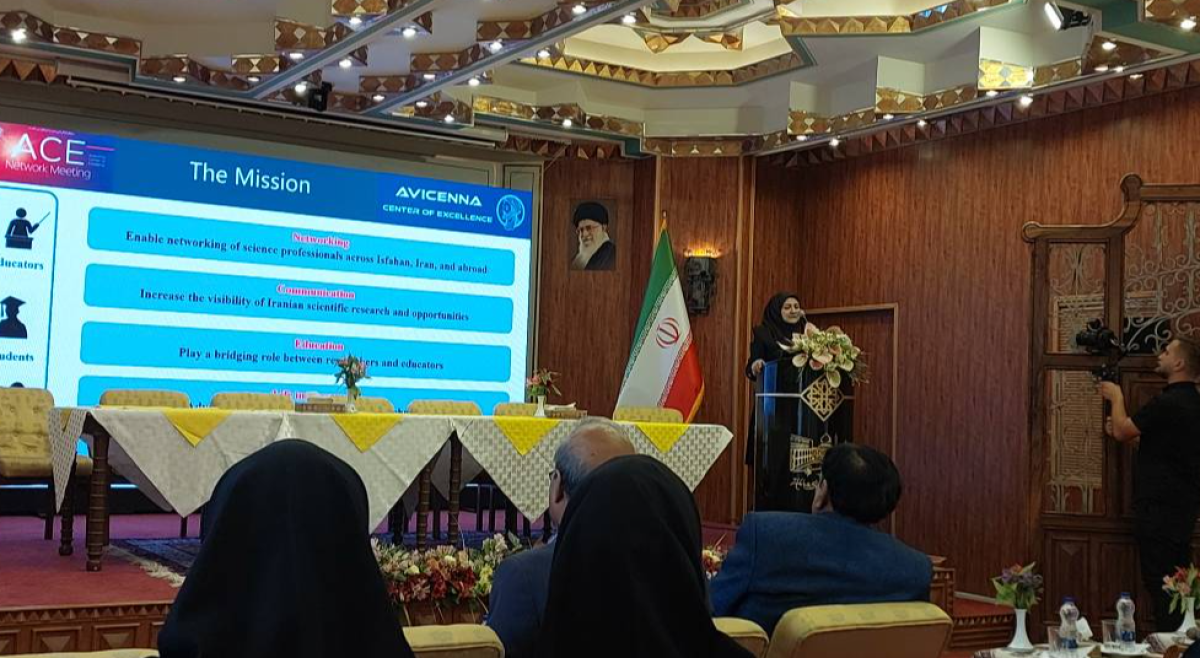ACE meeting held in Isfahan


The meeting of "Avicenna Center of Excellence" was held on Monday morning and
the Mustafa (pbuh) Laureates elaborated on their achievements
MSTF Media reports:
The meeting of the "Avicenna Center of Excellence" was held with the presence of the laureates of the fifth edition of the Mustafa (pbuh) Prize at Abbasi Hotel in Isfahan, center of Iran.
Ahmed E. Hassan, Professor of Queen's University, Canada, Omid C. Farokhzad, Senior Lecturer of Harvard Medical School, USA, Samia J. Khoury, Professor of the American University of Beirut, Lebanon, Ahmad Fauzi Ismail, Professor and Vice-chancellor of Universiti Teknologi Malaysia and Murat Uysal, Professor of the New York University Abu Dhabi, UAE delivered their speeches.
Murat Uysal said that Graham Bell experimenced the use of the concept of light for telecommunications in the late 19th century by inventing a device called the photophone.
This device uses sunlight to transmit audio signals but it had short range, he added.
The invention of laser in the 60s was a revolution in optical communication. A laser provides a coherent and concentrated beam that can be used for long-range communications, he said.
In the late 70s and 80s, researchers developed optical application systems, he noted.
These systems used lasers to transmit audio signals over short distances, typically up to several kilometers, he stated.
In the late 1980s, scientists focused on fiber-optic telecommunications, where optical signals were transmitted through optical fibers made of glass or plastic, Uysal said.
This technology provided longer range and higher bandwidth compared to Free Space Optical (FSO) communications.
In the late 90s, Like remote controls and wireless connection between devices. infrared optical communication technology was also used for short-range telecommunications, he added.
He went on to say that this type of communication used invisible wavelengths and was limited by the requirement of a straight line.
In the late 1990s and early 2000s, researchers began their experiments to use open space optical telecommunications for long-range communications, he stated.
Open-space optical telecommunications have commercial applications in areas such as point-to-point wireless connectivity, satellite communications, and high-speed data transmission between two buildings, he noted.
A method of data transmission using light as a message carrier and requires the use of LEDs or light-emitting diodes to send and receive information through air or space without the need for physical cables or wires, and a wide range of technologies for application and uses different types of light including visible light for wireless communication, he said.
Underwater visible light communication uses the light spectrum, which is the part of the light spectrum visible to the human eye, and provides the possibility of sending data by adjusting the intensity of light emitted by LED sources, he noted.
Nano membrane technology with the application of water separation from wastewater
Regarding manufacturing nano membrane technology by using oily wastewater separation, water purification and water separation from wastewater and membrane for treatment in medicine, Ahmad Fauzi Ismail said: reverse osmosis membrane, resistant solvents, application of membrane technology in gum extraction and deacidification process in palm oil processing and refining.
Advanced membrane materials for gas and acid separation, porous carbon fiber membrane is used for gas separation.
The mixed matrix membrane is used in the field of energy, he said.
The relationship between MS and geographic conditions
Studies show that secondary progressive MS is directly related to geographical conditions, Samia J. Khoury said.
The relationship between secondary progressive MS and geographical conditions can be adjusted, she added.
More than 50,000 MS patients from 27 countries collaborated with our team.